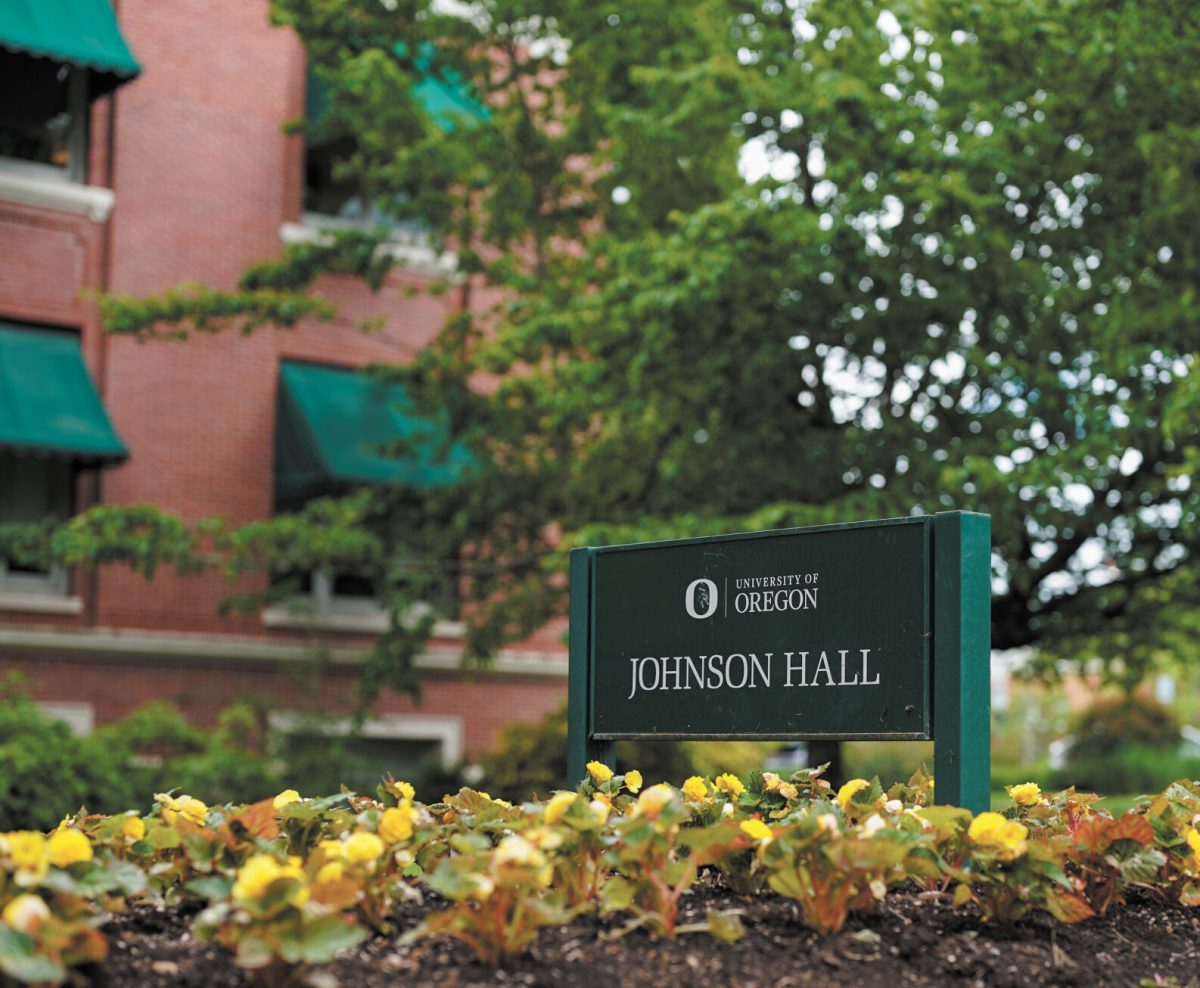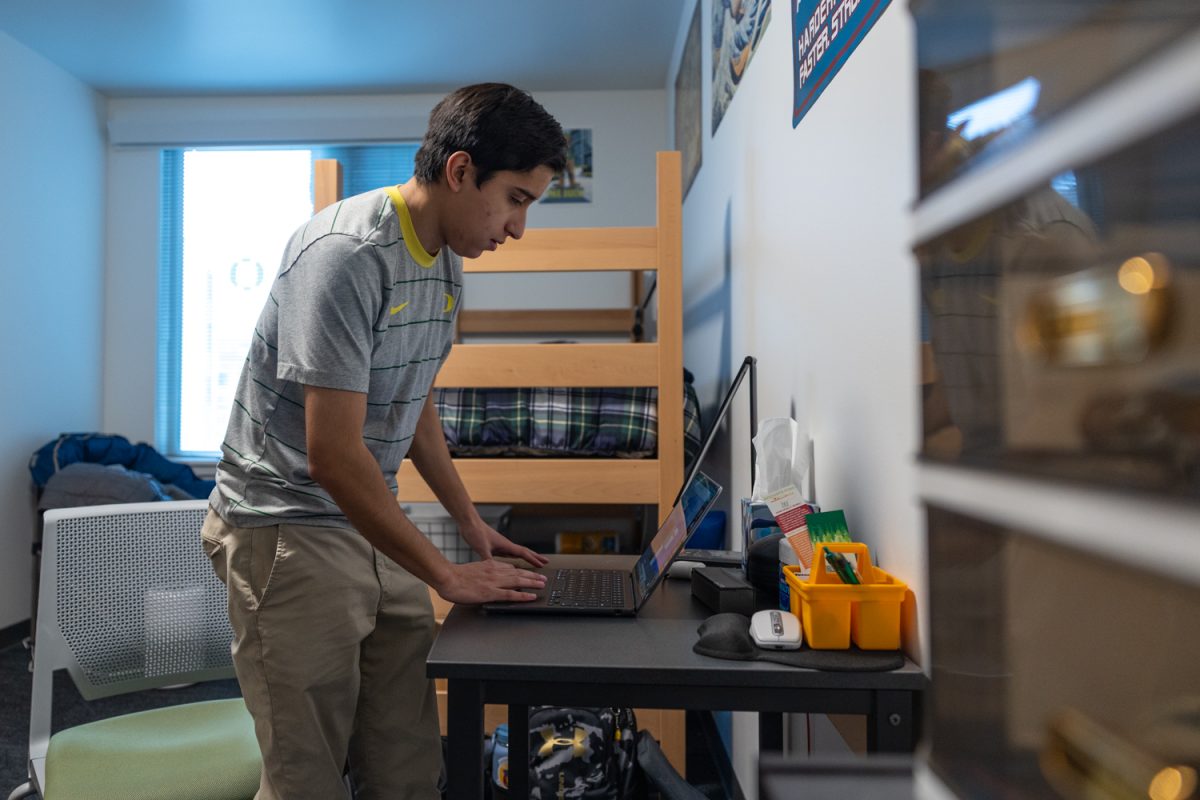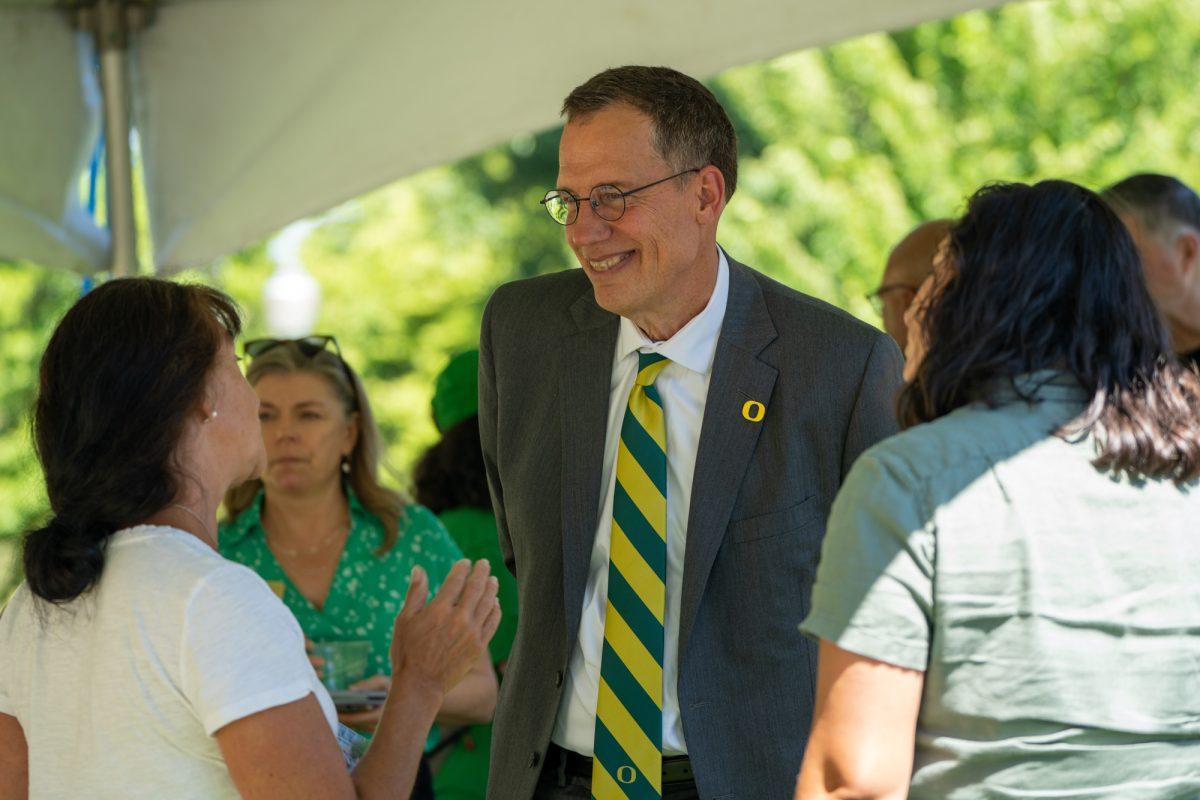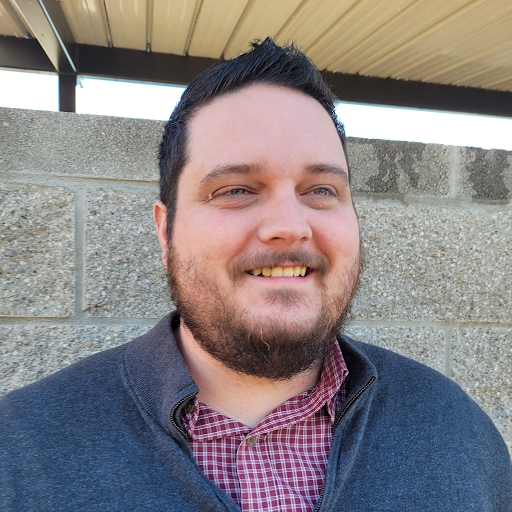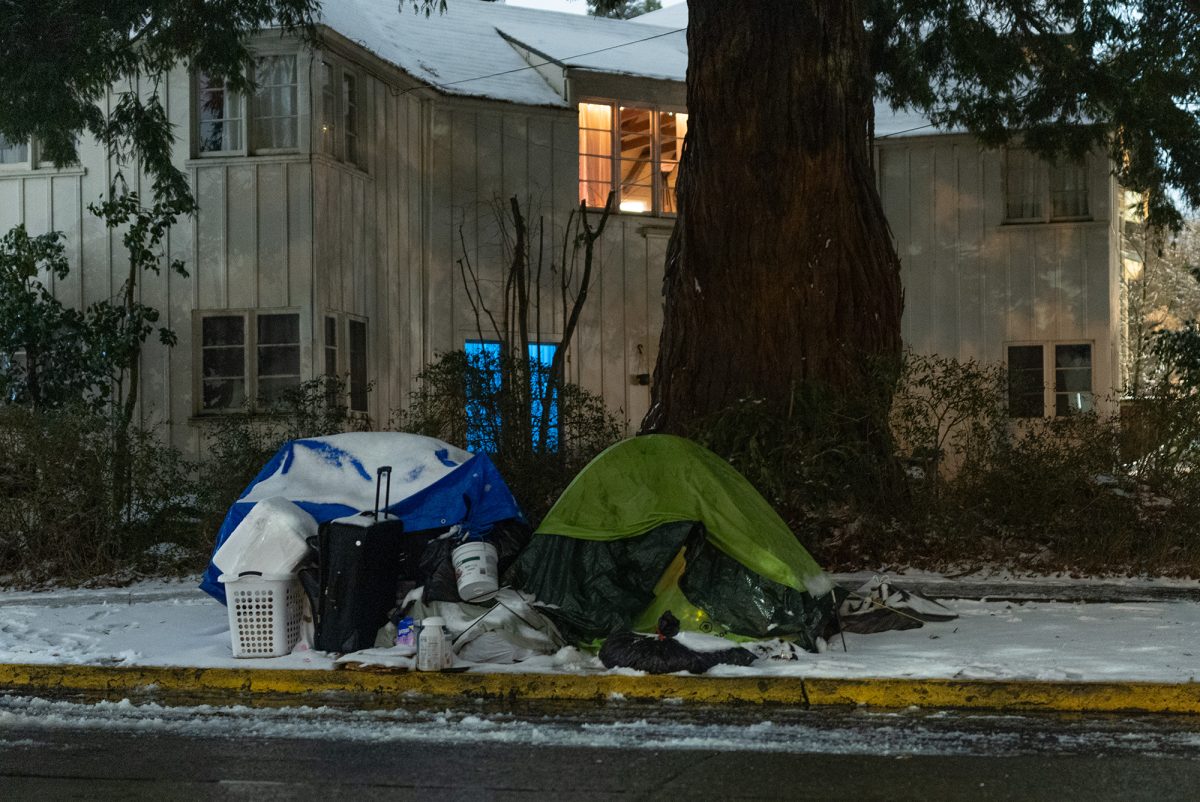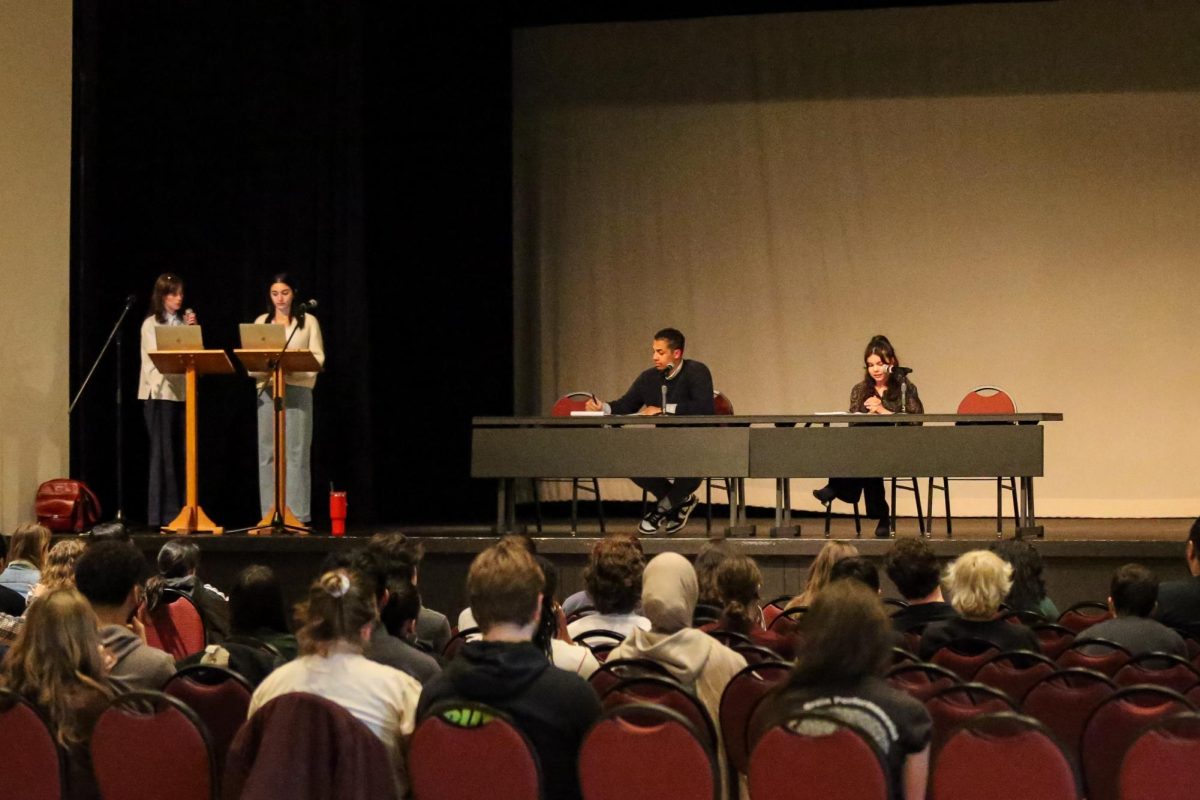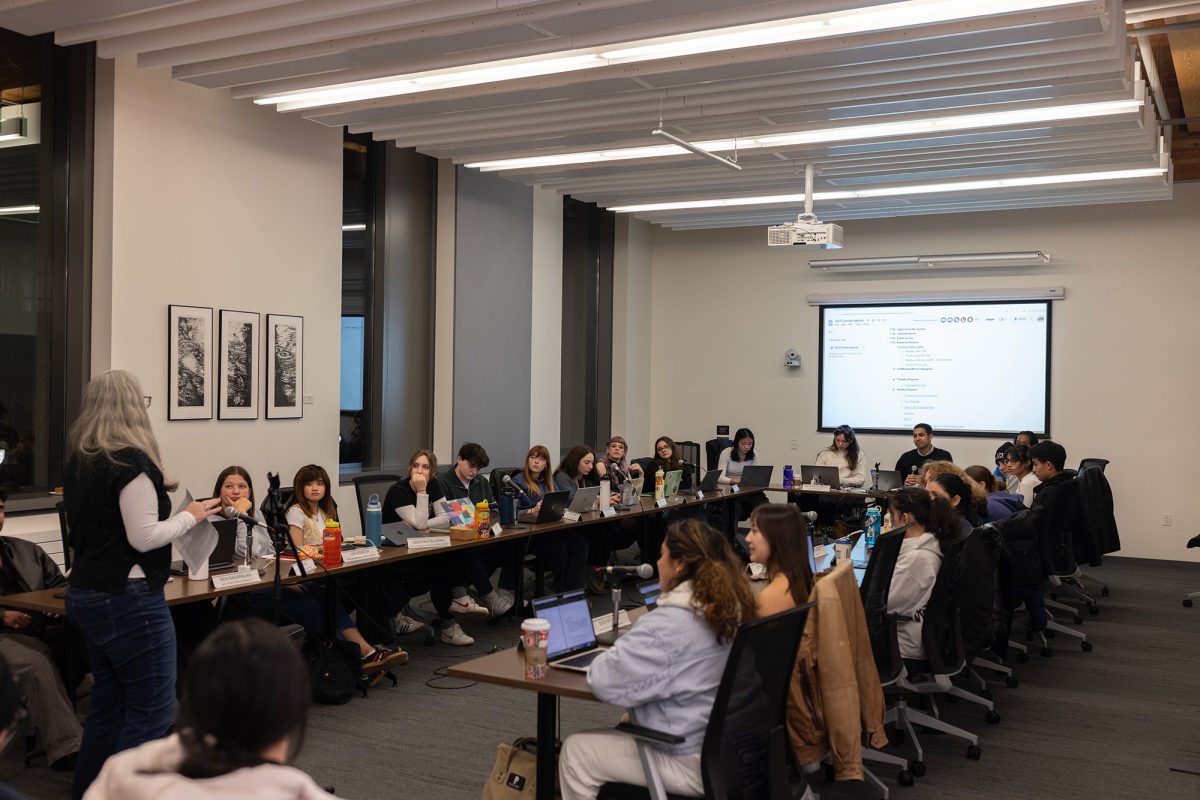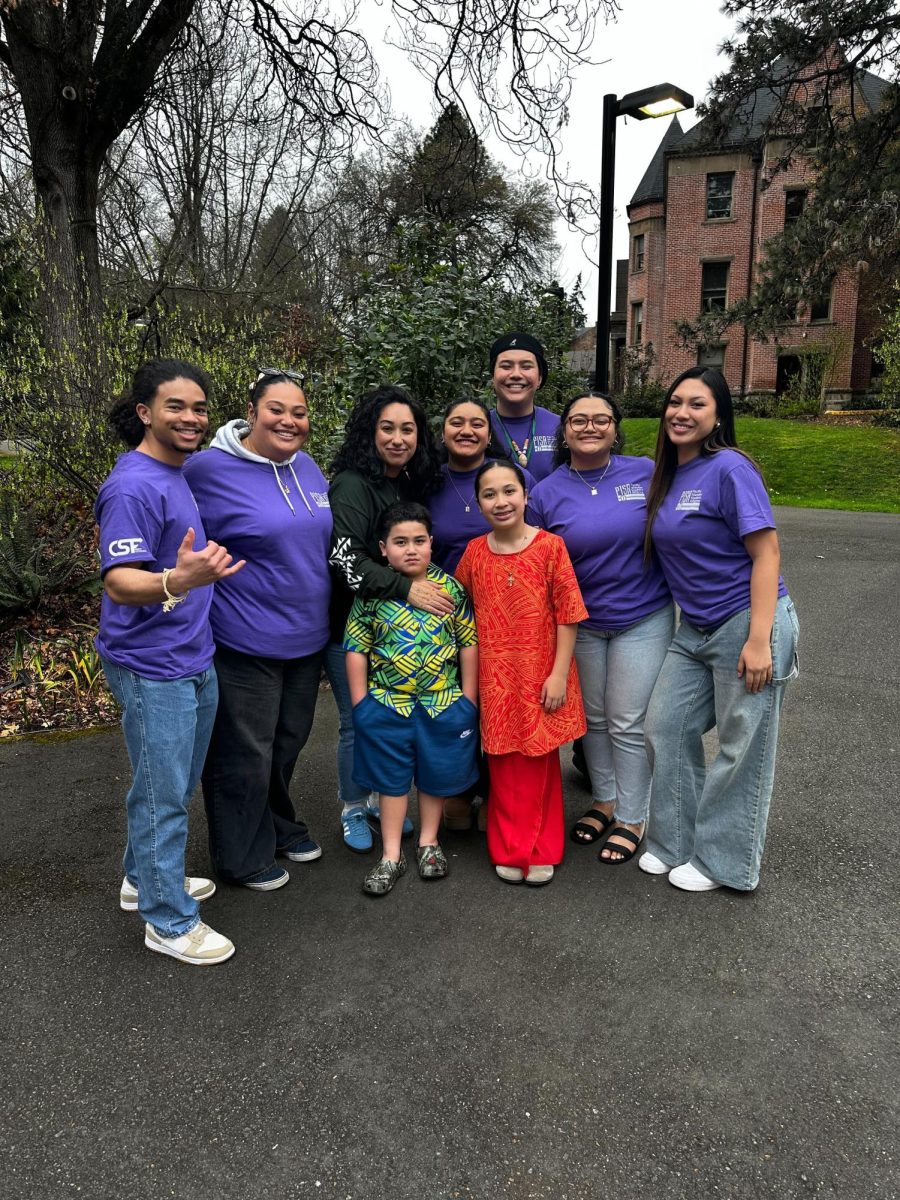At the start of the 2023-2024 academic year, the New Residence Hall and New Apartment-Style Hall opened their doors for incoming residents. Currently, both residential areas are temporarily named, and UO is working on determining permanent names.
The process of naming the New Residence Hall and New Apartment-Style Hall has been outlined by a selective committee, the New Residence Halls Building Naming Committee.The committee is seeking a list of recommendations that resemble individuals or communities that have made an impact to UO.
Naming for underrepresented communities
Associate Vice President & Chief of Staff of Student Services and Enrollment Management Anna Schmidt-MacKenzie co-chaired a committee to deliver recommendations for both Building B — the New Residence Hall — and Building C, the New Apartment-Style Hall, under the Hamilton Walton Transformation Project. Building A, DeNorval Unthank Jr. Hall, was completed in the summer of 2021.
Aside from Schmidt-MacKenzie, the New Residence Halls Building Naming Committee is composed of six other faculty members.
According to Schmidt-MacKenzie, both Buildings B and C are temporarily named since the committee experienced a delay of presenting recommendations to the Board of Trustees in 2023. The presidential transition from former president Michael Schill to current president John Karl Scholz backtracked that process.
“Ideally, I would say it’s more important that we have the right name, then we have the right time,” Schmidt-MacKenzie said.
In 2023, the committee gathered and established an outline of principles and values that would be put into the selection process.
According to Schmidt-MacKenzie, those principles and values were designed to assist choosing the names that “perhaps [represent] quieter voices on campus.” Additionally, the committee is seeking a name that may potentially “reveal the history of the University of Oregon for peoples and communities that may not be known.”
Additionally, under the Naming of Facilities Policy, the committee is required to follow specific regulations when considering the recommendations, including a period of a minimum of one year between an individual’s death and the proposal for naming.
The committee is also valuing recommendations that represent underrepresented communities or individuals.
“Ideally, yes, it would be great for both of these buildings to record having some representation for underrepresented communities, people and peoples,” Schmidt-MacKenzie said.
Following the establishment of the values and principles, the committee sent out a survey in early 2023 to gather feedback from the university community: students, faculty, staff and alumni.
The committee received 240 submissions “that were all over the map, some of the recommendations were clearly silly,” Schmidt-MacKenzie said. Alternatively, some of the recommendations gave the committee “a lot to think about.”
The decision for soliciting submissions from the community was crucial in the selection process.
“Inviting the community in to submit recommendations was nothing that was prescribed to us , ” Schmidt-MacKenzie said. “That was something we felt was very important as leaders of that community.”
Following the survey, the committee reached out to several groups supporting equity and inclusion on campus, including the Black Strategies Group and the Latinx Strategies Group.
Both DeNorval Unthank Jr. Hall and Kalapuya Ilihi Hall were named after the university sought name suggestions from the community.
Toward the end, the procedure becomes a process for “approval.” The committee is required to connect with University Advancement, which handles the philanthropic relationships, as a requirement called “due diligence.”
“A step that we felt important as a committee would be to consult with a family and with anyone that would be deemed appropriate,” Schmidt-MacKenzie said.
In the case of Kalapuya Ilihi Hall, the university consulted with the Kalapuya tribe and tribal leaders beforehand, as well as the Native American & Indigenous Studies ARC.
Both Buildings B and C will have the opportunity for cultural references, including artwork or other signifiers to complement and highlight the names, according to Schmidt-MacKenzie.
The final steps in the process include consulting with Scholz before presenting the recommendations to the Board of Trustees.
“The president definitely needs to see the name before it goes to the Board of Trustees,” Schmidt-MacKenzie said.
Scholz requested to comment on the names once the recommendations are submitted to the board.
The Board of Trustees’ next meetings are on March 11-12 and June 3-4.
Schmidt-MacKenzie is hoping to have the names publicly announced by the end of the 2023-2024 academic year, but she is unable to share the names until then.
Student Organizations and Residents Speak Out
Many identity-based student organizations expressed their feelings and opinions toward the naming process.
UO Black Male Alliance President Desi Acuay said that if both names are affiliated to a person of color, Buildings B and C should be priced at reasonable costs that allow for lower-income students to live in them.
“It’s [Buildings B and C] [that are] more expensive and it’s the people of color [who] don’t have the expenses to fill up that space,” Acuay said. “It’s supposed to represent them.”
Acuay also said that he expects more diversity in Buildings B and C if both halls are named after a person of color.
“If it’s someone Black, like nine times out of ten, more likely [the] university did that [to] promote a sense of diversity, and if you go down that route, then I expect some diversity at the building,” Acuay said.
Similarly, Mixed Student Union Co-President Gabriela Moreno questioned why dormitories are named after people of color, when students of color cannot access them.
“Unthank and Kalapuya [Halls] were named after these people, but they’re the most expensive dorms, and the least accessible because of how racialized our economic system is, then it means that the people who it’s supposed to be representing can’t even get into those spaces,” Moreno said. “So what’s the point of having something that’s supposed to be representative of you if you can’t even access it?”
Asian and Pacific American Student Union External Outreach Coordinator Olivia Tong said that naming the halls after a person of color would be beneficial for students at a predominantly white institution.
“A dorm hall that’s named after someone who’s a person of color will make students of color feel more seen, and to know that the university is acknowledging minority voices, I feel like will make students feel more comfortable and feel more supported by the university,” Tong said.
Acuay, Moreno and Tong all agree that the university should choose a name representing a person of color.
“There can never be too much representation for people of color,” Tong said.
Acuay and Moreno both said that the university may select a diverse name for performative reasons.
“The university just [checks] the diversity box without actually acknowledging the material conditions that disproportionately affect students of color on campus,” Acuay said. “It’s a hell of a lot easier to name things after people of color than to actually do anything that affects the material conditions for students of color.”
UO student Jacob Lehr hopes the name is “impactful” and “knowing the demographics of Eugene and they [university] would probably lean towards something more like a POC [people of color] [name].”
On the contrary, UO student Andy Sax believes that the university will choose a name affiliated to a white individual.
“They’ll name it after a white person just because typically they name it after donors and donors are usually white,” Sax said.
The Process of De-naming a Building
“There’s not really a formalized process for naming buildings, [but] there’s a very prescriptive process for de-naming a building,” Schmidt-MacKenzie said.
In the fall of 2015, the Black Student Task Force presented UO with a set of demands, including the change of all building names affiliated with the Ku Klux Klan.
Beginning in 2016, the university went through a process of renaming two buildings on campus. Deady Hall (now University Hall) and Dunn Hall (now Cedar Hall) were renamed after demands from the Black Student Task Force. Frederick S. Dunn served as the Grand Cyclops of the Lane County Ku Klux Klan, while Matthew Paul Deady had views that were pro-slavery and racist.
A committee was arranged in February 2016 to provide Schill with advice on a set of criteria that could be utilized in decisions for de-naming buildings on campus. Afterwards, Schill appointed three historians to research the historical record of both Dunn Hall and Deady Hall. A 34-page report followed later that year.
Schill delivered a letter to the Board of Trustees on Sept. 1, 2016, outlining the principles that would guide the decision of whether to recommend the denaming of a building.
In the letter, Schill announced the decision to recommend the denaming of Dunn Hall and the request to temporarily rename it to Cedar Hall. The request was adopted on Sept. 9, 2016.
Additionally, Schill held back to recommend the de-naming of Deady Hall since “Deady was a man of great achievement, not the least of which was his pivotal role in the founding and sustaining of the University of Oregon,” Schill said in the letter.
On Jan. 25, 2017, Schill gave an update on Deady Hall and on the Black Student Task Force’s demands. Schill announced the establishment of a new Black cultural center, now known as the Lyllye Reynolds-Parker Black Cultural Center.
Also announced was the process of renaming Cedar Hall. The Board of Trustees announced the rename to Unthank Hall on June 1, 2017, after receiving suggestions from students, faculty, staff and local community members.
The Board of Trustees voted unanimously in a June 24, 2020 meeting to remove the name of Mathew Deady, following a call to action from former UO trustee Andrew Colas. Deady Hall was temporarily named University Hall and continues to be named so.
On May 19, 2021, the resolution to permanently name the new residence hall at the corner of Agate Street and 15th Ave. DeNorval Unthank, Jr. Hall was approved.
According to Schmidt-MacKenzie, due to the denaming of both Deady and Dunn Halls, “those examples are what propelled the university to have a pretty prescriptive formal process” for naming both Buildings B and C.
Both the Lyllye Reynolds-Parker Black Cultural Center and DeNorval Unthank Jr. Hall are currently the only UO buildings that are named after a person of color.
Anna Schmidt-MacKenzie, the Associate Vice President and Chief of Staff for the Division of Student Services and Enrollment Management. She oversees various campus activities to "provide an outstanding student experience." (Kai Kanzer/Emerald)





